Realizing children’s rights in Burkina Faso
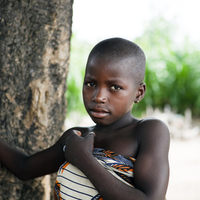
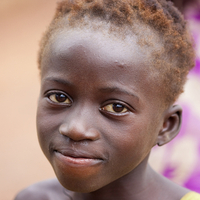
The enforcement of children’s rights is an important issue that concerns all human societies. Burkina Faso, despite the level of poverty of the population, must urgently reduce gender inequalities and provide young girls with a living environment that promotes the development of their full potential and guarantees their empowerment.

Realization of Children’s Rights Index: 5,29 / 10
Black level: Very serious situation
Population: 20.32 million
Pop. ages 0-14: 44.6%
Life expectancy: 61 years
Under-5 mortality rate: 87‰
Burkina Faso at a glance
Burkina Faso is a landlocked country that covers 272,967 km². Located in the heart of West Africa in the Niger loop, it is bordered to the north and west by Mali, to the east by Niger and to the south by Benin, Togo, Ghana and Côte d’Ivoire.
Burkina Faso’s population is estimated at 20,321,378 (World Bank, 2019). The capital of Burkina Faso, Ouagadougou, is experiencing exceptional population growth, as it houses 12% of the country’s total population (EDSBF-MICS IV, 2010). It is followed by the Hauts Bassins (11%) and Boucle du Mouhoun (10%) regions (EDSBF-MICS IV, 2010). The population of Burkina Faso is strikingly young, with the average age being 21.8 years. Those under 14 thus represent 44.6% of the population (World Bank, 2019).
Burkina Faso is one of the poorest countries in the world. This level of poverty translates into a weak economy and low levels of human development. In 2015, the United Nations Development Programme (UNDP) ranked the country 183rd out of a total of 188 countries on the Human Development Index (HDI), and more than 55% of the population is believed to be living below the poverty line.
In addition, food insecurity (CDAC & H2H, n.d.), the poor quality of education, the relatively high poverty rate, as well as a very high mortality level (especially maternal and child mortality levels), are some of the challenges Burkina Faso must confront if it wants to improve the standard of living of its population in general, and children’s living conditions in particular (Educo, 2017).
Status of children’s rights [1]
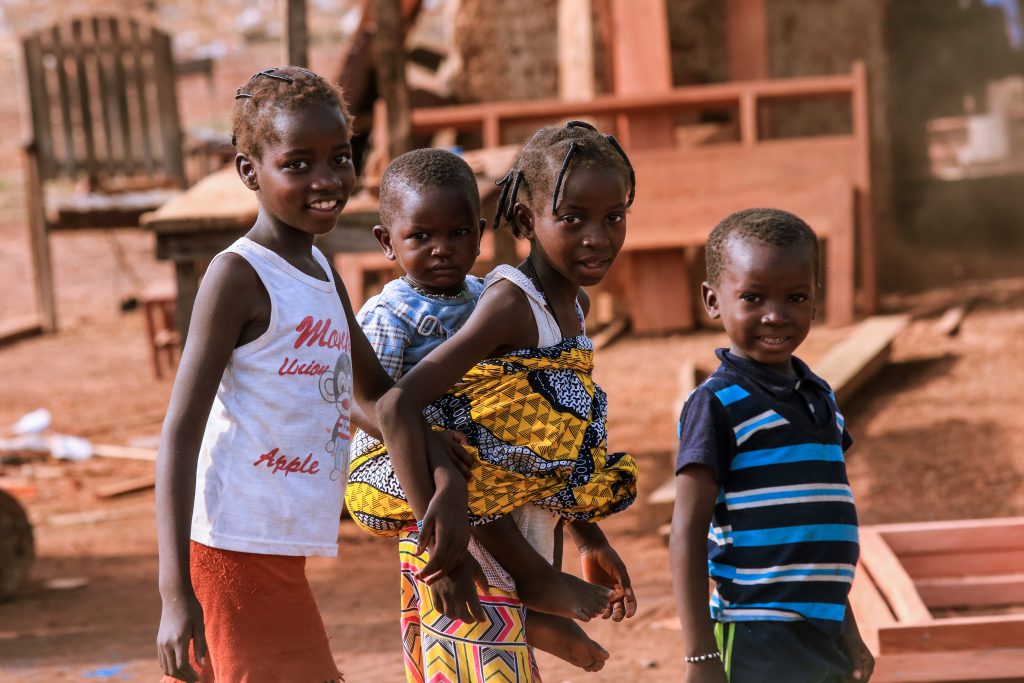
Burkina Faso has repeatedly demonstrated its commitment to the cause of children. The country participated in the World Summit for Children in New York in 1990 and ratified international treaties such as the Convention on the Rights of the Child, which affirm and guarantee children’s rights. In doing so, these commitments give rise to various actions and policies geared towards the promotion and protection of children’s rights. Burkina Faso’s economic and social development policy thus favours certain elements such as the nutritional status of the child, the drop in the infant mortality rate, family vulnerability, and access for children and their mothers to basic social services.
This policy thus reveals the reality that Burkinabe children face many challenges. With regards to the youth of the population, children are the most affected by poverty, which affects women by up to 52% and men by up to 48% (International Bureau of Children’s Rights, 2017). The education sector represents a major challenge for the country, which wants to make the right to education a priority by establishing an education sector policy covering the period from 2014 to 2023.
Social protection targeting children
Children of Burkina Faso who are in poverty are the most affected. Poverty in Burkina Faso remains an essentially rural phenomenon. Indeed, the contribution of rural areas to the overall incidence of national poverty in 2003 was 92% (Wetta & Koné, n.d.). This rate requires careful consideration, since the number of children per household is greater in rural areas than in urban areas.
This fact demonstrates that rural child poverty is much higher than the national average. Ensuring the implementation of a social protection policy that targets children and that also supports families is therefore of particular importance. In Burkina Faso, the child-centered social protection system is visible through social safety-net programs.
Social safety nets aim to protect families from the consequences of economic shocks, natural disasters, and other crises (World Bank, n.d.). Burkina Faso, through its national social protection policy, has several social safety-net initiatives intended to promote access to basic social services. This is particularly the case with monetary and quasi-monetary transfers or even transfers in kind (Burkina Faso, 2012).
Cash and quasi-cash transfers mainly benefit orphans and vulnerable children, but also poor households; the eligibility criteria being the level of poverty as well as the presence of Orphans and Vulnerable Children (OVC) within the families who benefit from it (Burkina Faso, 2012).
Social safety nets thus have a positive impact on health, but also on children’s education. It is also important to note that around 20% of vulnerable households in Burkina Faso are prey to chronic food insecurity (Burkina Faso, 2012). The authorities are trying to combat this food insecurity, especially through transfers in kind.
Transfers in kind consist mainly of food transfers and the distribution of school kits. Four types of food transfers are currently implemented in Burkina Faso. These are: sales of food at subsidised prices, targeted distribution of free food, nutritional programmes, and school feeding programmes (Burkina Faso, 2012). As regards the distribution of school kits, this mainly consists of the free distribution of textbooks and school supplies in primary schools. This is because the ultimate objective of these programmes is to greatly increase the school attendance rate.
Addressing the needs of children
Right to health
Health is an essential aspect for proper children’s development. Guaranteeing the right to health for the benefit of every child must therefore be an absolute priority for the Burkinabe authorities.
From a legal point of view, the right to health is experiencing a certain evolution within Burkina Faso. Burkina Faso ratified the International Convention on the Rights of the Child on July 23, 1990. It should also be noted that Burkina Faso recognises in its constitution the right to health and child protection. The existence within Burkina Faso of a public health code is an exceptional feature in West Africa that constitutes a breakthrough in health terms.
This increased legal protection thus lays the basis for the progressive implementation of the right to health in this country. However, in practice, certain problems exist within Burkina Faso that hamper the implementation of the right to health, especially for children because of their vulnerability.
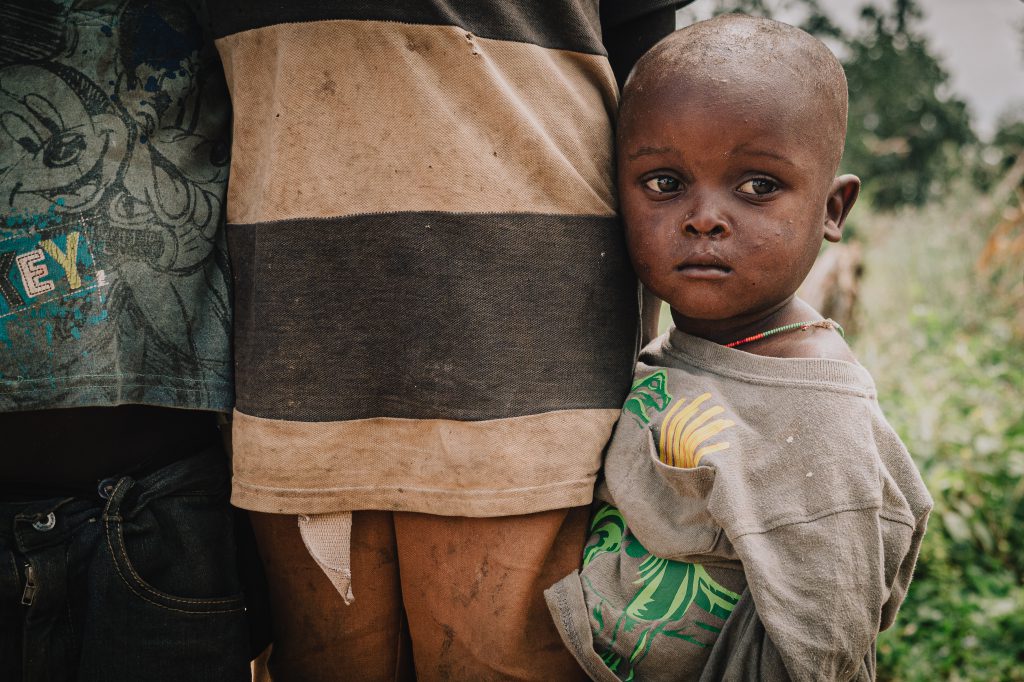
A major obstacle in the implementation of the right to health in Burkina Faso is the financial accessibility of health services. Poverty affects a large part of the population, as mentioned above. In order to remedy this situation, the Burkinabe government has made strengthening the financial accessibility of the population to health care a priority by reducing the financial burdens borne by the population through the gradual adoption of some free and subsidised services and care. Some of these measures are therefore focused on children.
These include, among other things, free treatment of severe malaria in children under 5 in public health facilities, free vaccination for children under one year old, free vitamin A supplementation for children under the age of 5, and free preventative care for pregnant women (Burkina Faso, 2012).
The actions of the Burkinabe government therefore prove its commitment to guaranteeing children’s right to health. However, these actions must be reinforced, especially regarding poor populations who have high health needs yet lack the resources to allow them to have access to health care. Reducing financial barriers to health care must therefore remain an absolute priority for the authorities of Burkina Faso.
Right to education
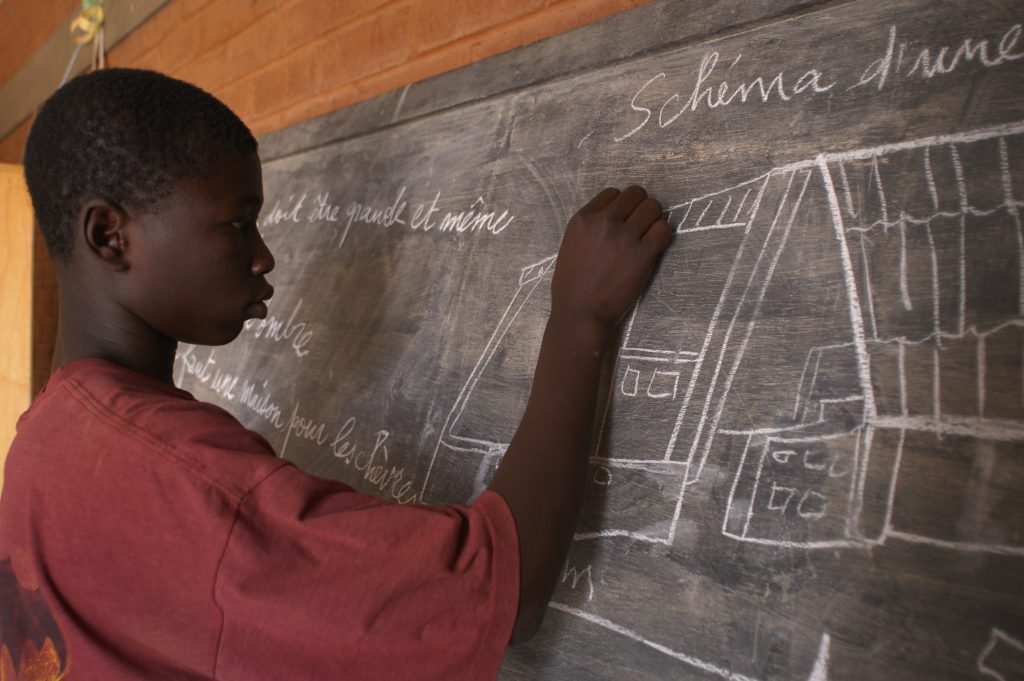
The action of the Burkinabe authorities to improve education cannot be neglected. In its desire to strengthen the right to education, the State of Burkina Faso establishes free education for all children aged 6 to 16 through the Education Act, which is the corner stone of the Burkinabe education system, adopted on July 30, 2007 (Official Journal, 2007-09-20, No. 38, Law No. 013-2007/AN of the Education Act). This provision aims to guarantee universal access to the education system and to reduce the costs of poor households related to the education of children.
However, it is clear that the educational situation in Burkina Faso remains unsatisfactory. The state struggles to guarantee education for all, and several categories of children remain outside the formal education system (EDSBF-MICS IV, 2010). This is particularly the case for disabled children, whose access to education remains problematic. This has the consequence of seriously jeopardising their future, especially their chances of socio-professional integration (Educo, 2020).
In addition, gender inequalities and access to education for children, for vulnerable children, and for those living in rural areas are major problems that require the attention of the Burkinabe authorities (International Bureau of Children’s Rights, 2017).
Right to identity
In order to permit a child to be able to enjoy his or her rights, as well as the state’s protection, that child must be formally registered; in other words, the child’s birth must be registered if his or her right to identity is to be put into practice.
In the context of Burkina Faso, the declaration of births is required by Article 56 (Zatu An VII 13 of 16 November 1989), establishing and applying a Code of the Person and the Family in Burkina Faso. The rate of children under 5 who have been registered is 77% (EDSBF-MICS IV, 2010).
This rate therefore implies that there are still colossal efforts to be made in order to better guarantee the right to identity for every child. The disparities in terms of birth registration are strongly seen in terms of environment and region of residence. Thus, children registered in the civil registry are proportionally less numerous in rural areas than in urban areas (74% against 93%), (EDSBF-MICS IV, 2010).
Children from the central western regions and especially from the Sahel region are more likely not to be registered at birth. This situation is the opposite of that observed in the centre of the country and in Ouagadougou, where almost all births are declared, with a rate of around 93%.
Moreover, in Burkina Faso, registered children do not always have a birth certificate, either because if has been lost or has not been given to the parents. In this context, the emphasis must be placed on certain regions such as the East and Central-Southern regions, which respectively record rates of 51.8% and 29.9% of people registered but without a birth certificate that proves their registration (EDSBF-MICS IV, 2010).
Finally, special attention must be paid to the economic situation of individual families, which is an important factor in the registration of births. The percentage of registered births attached to the poorest quintile is 62%. This situation is different to families with a better economic situation, the rate of which is 95.2% (EDSBF-MICS IV, 2010). In order to guarantee children their social advantages, their access to health care, to education, to the right to inheritance, and to many other advantages, it is imperative to guarantee children the right to identity.
Risk factors → Country-specific challenges
Child labour
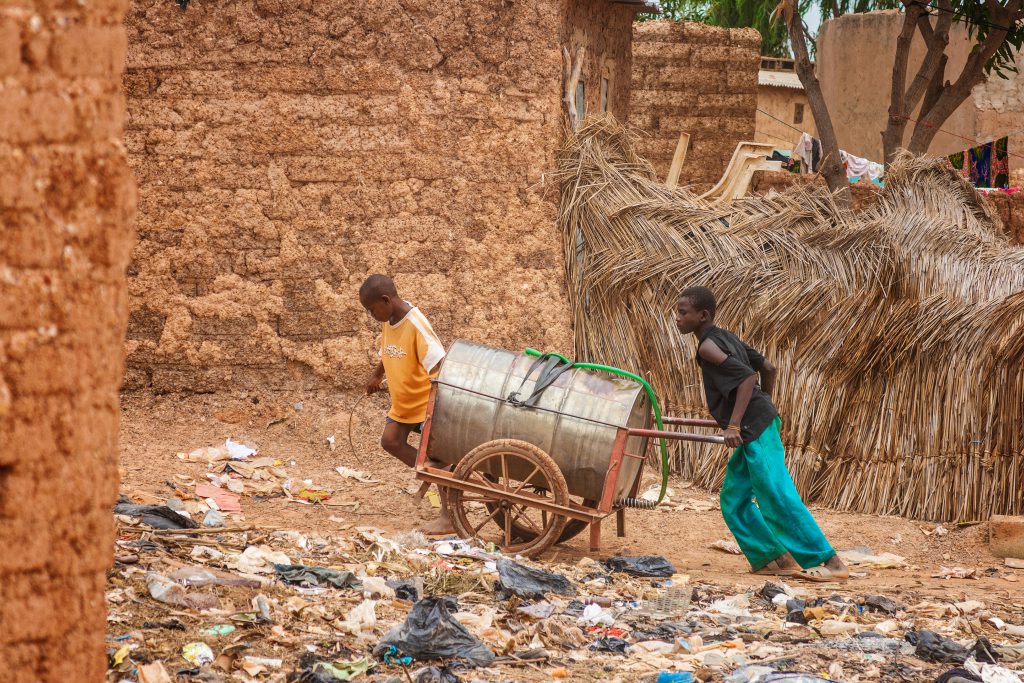
Under Article 32 of the convention on the rights of the child, a child has the right to be protected from any work that puts in danger his or her health, education, or development. In Burkina Faso, child labour is still a major problem that has consequences on the development of the child and a significant impact on the economic and social development of the country. The issue of child labour is all the more urgent since, according to the International Labour Organisation (ILO), Burkina Faso is one of the African countries with a very high rate of child workers, that is, 51.05%.
Various sectors involve children. These include the agricultural sector (69.2%), domestic work (19.2%), trade (5.6%) and gold mining (2.3%), (International Bureau for Children’s Rights, 2017). The worst forms of child labour can be seen in the exploitation of children in cotton fields, in artisanal quarries, and on gold mining sites. The physical and emotional development of these children is seriously affected by this hazardous work. Involved in this work because of poverty, children are exposed to two types of risk: the toxicity of mercury in gold mines, and the chemicals and other pesticides used in the cotton industry.
These harsh conditions are increased in the case of young girls, whose workload often proves heavier than that of boys. Young girls are also victims of all kinds of gender-based violence. In the absence of protection, and unaware of their rights, they are locked into a tradition of submission. Girls who have been violated wall themselves into silence (International Labour Office, ILO, 2013).
These ills to which children are exposed are obviously contrary to the measures resulting from ILO Convention No. 182, ratified by Burkina Faso on July 25, 2001. Despite the gravity of the situation, it is clear that Burkina Faso has made progress in the fight against the worst forms of child labour. The government has, in fact, adopted a national programme and a roadmap to combat child labour in gold mining sites and artisanal quarries (2015-2019).
Their implementation made it possible to support families in the process of family and social reintegration and to rehabilitate children living and / or working on gold mining sites. Thus, 6,926 children were removed from gold mining sites and monitored regarding their social and family reintegration (Burkina Faso, 2018).
These efforts have not yet been able to put an end to this scourge. This blameworthy situation, which persists and affects children so negatively, has the effect of slowing down the government’s efforts to educate children and plunging them into a vicious and perpetual cycle of poverty.
Child marriage
Within Burkinabe society, marriage plays an important social role, in that it represents not only the union of the bride and groom, but also that of the families concerned. Marriage is therefore sacred and perceived as the only framework through which a woman can procreate, failing which she would dishonour herself and her family (International Bureau of Children’s Rights, 2017).
From such a perspective, marriage in society functions as a protection against this dishonour. Such a conception tends to favour forced marriage among children, which seems to be a means of preserving the honour of the young girl’s family (International Bureau of Children’s Rights, 2017).
According to UNICEF, more than 52% of women are married before the age of 18 (International Bureau of Children’s Rights, 2017). Marriage pledges often take place at the girl’s birth or during her childhood. It requires the payment of a dowry to prove the commitment of the suitor’s family (Amnesty International, 2016).
The consequences of these marriages are numerous and have implications at several levels. At the psychological and physical level, the overriding question is whether these young girls who are forced into marriage can cope with the physical and mental implications of such a situation. The obvious answer is no. Some girls, as reported by the NGO Amnesty International, can be married from the age of 11.
Their health is greatly endangered, particularly with regards to their reproductive abilities. Their young age is likely to lead to pregnancy-related complications and can be life threatening. These young girls are thus deprived of their sexual and reproductive freedom, an essential component of their right to health.
In addition, early and forced marriages constitute a major obstacle to the right to education of girls. Girls are generally forced to give up their studies, compromising their chances of success and empowerment (Amnesty International, 2016).
However, there is national legislation that aims to protect these young girls from forced marriage. Forced marriage constitutes a crime, because it is prohibited by the penal code in Article 76 (International Bureau of Children’s Rights, 2017). Consent in marriage also benefits from particular attention from the Burkinabe authorities, as it is enshrined in the constitution in Article 23 and in Article 234 of the Personal and Family Code (Amnesty International, 2016).
It is therefore essential to ensure a better application of the laws protecting young girls against early and forced marriage and, in addition, to ensure the modification of the legal age of marriage considered discriminatory (17 years for girls and 20 years for boys), (Amnesty International, 2016).
Female genital mutilation (FGM)
The Committee on the Rights of the Child on July 10, 2013, stressed to the Burkinabe government its concern regarding the lack of attention given to female genital mutilation. About 76% of Burkinabe women aged 15 to 49 have undergone genital mutilation (Carrefour International, n.d.). It is also important to mention the age of girls at circumcision, which is quite low. In fact, according to the multiple indicator demographic and health survey, in 60% of cases, women reported that they had been circumcised at less than 5 years of age. FGM is practised throughout the country.
There are, however, some areas with a high prevalence. These are the Central-East (89.5%), Hauts-Bassins (82.3%), the Central Plateau (87.7%) and the Central-North of the country (86.8%), (EDSBF -MICS IV, 2010). Like some countries such as Nigeria, Sudan and Yemen, FGM in Burkina Faso is highly prevalent in rural areas (78% compared with 69%), (Lewnes, 2005).
The consequences of these practices on young girls are negative. In addition to the psychological and physical consequences on these young girls, FGM gives rise to a flagrant denial of the rights of young girls. These practices violate their right to life, their right to physical integrity, their right to health – especially their sexual and reproductive health – as well as their right to be free from all forms of violence, physical or mental harm, and brutality (Amnesty International, 2016).
Two factors are likely to explain the continuance of FGM in Burkina Faso. These are firstly the mother’s situation and secondly her level of education (UNICEF n.d.). Mothers who have already undergone FGM are more likely to have their child undergo the same practice because of the social benefits that this could represent for the girl in the community.
Finally, the mother’s level of education cannot be neglected as a factor in slowing down FGM. “Overall, daughters of more educated mothers are less likely to undergo FGM than daughters of mothers with little or no education.” (UNICEF n.d.)
Written by Habib Kouame
Translated by Khalid Aada
Proofread by Sharon Rees
Last updated on 31 March 2021
References:
Amnesty International. (2016, Avril 26). Le Mariage précoce et forcé au Burkina Faso: les faits.
Banque Mondiale. (2019). Burkina Faso Data.
Burkina Faso. (2011). Plan National de Développement Sanitaire 2011-2020.
Burkina Faso. (2012). Politique Nationale de Protection Sociale 2013-2022.
Burkina Faso. (2012, Septembre). Politique Nationale De Protection Sociale 2013-2022.
Carrefour International. (n.d.). Burkina Faso.
ENQUÊTE DÉMOGRAPHIQUE ET DE SANTÉ ET À INDICATEURS MULTIPLES (EDSBF-MICS IV). (2010).
Journal officiel, 2007-09-20, n° 38, Loi N°013-2007/AN portant loi d’orientation de l’éducation.
N’Diaye, F. C. (2013). Genre et travail des enfants dans les mines et carrières au Burkina Faso, au Mali et au Togo: Synthèse des études de cas. Bureau International du Travail. 9789222281190[ISBN]
Unicef. (n.d.). Note Stratégique du Programme Protection de l’enfance CPD 2018-2020.
WETTA, C., & KONÉ, M. (n.d.). Pauvreté chronique au Burkina Faso. Chronic poverty Research Centre.
[1] This article in no way claims to give a full or representative account of children’s rights in Burkina Faso. Indeed, one of the many challenges is the lack of up-to-date information on children in Burkina Faso, most of which is unreliable, unrepresentative, outdated, or simply non-existent.

